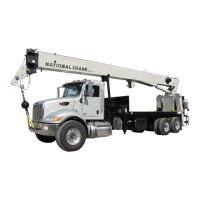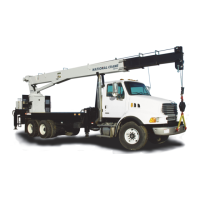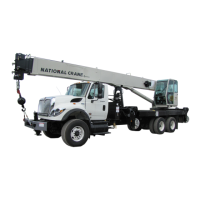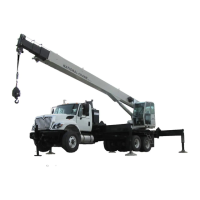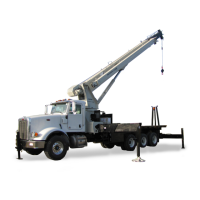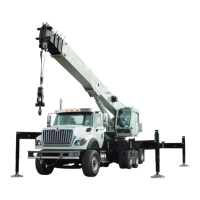National Crane Published 5-27-2018 Control # 039-06 6-11
800D REPAIR
and the extend cable sheave attached to the bottom of the
top plate of the second section at the sheave case end of the
boom, are accomplished as follows:
1. Extend boom until grease access hole becomes visible
in side plate of 2nd section as it extends out of 1st
section.
2. Visually check alignment between the 2nd section
access hole and the access holes in 3rd and 4th section.
When these holes become aligned, the end of the retract
cable sheave pins will be visible and accessible for
lubrication.
3. This boom extended position will coincide with proper
alignment of the access holes in the rear of the 1st
section for lubrication of the retract sheaves attached to
the rear of the 2nd and 3rd section.
4. The extend cable sheave located on the bottom of the
top plate of the 2nd section at the sheave case end of
the boom can be accessed at any boom length for
lubrication.
5. The sheaves located on the boom tip end of the
telescope cylinder can be greased while the boom is
fully retracted. Access to the grease holes on either end
of the pin is through holes in the boom side plates.
Four Section Cable Tensioning
After boom reassembly or from time to time if interior
proportioning cables appear loose, cable tensioning may be
required. Tensioning must be done with the boom horizontal.
1. Slightly tighten all cables. Then cycle the boom
approximately 4 ft (120 cm) out and in a few times to
equalize the extend and retract cable/ boom section
sequence positioning.
2. Fully retract boom. Do not induce and hold hydraulic
pressure. At full retraction, observing through the hoist
mount end of the boom, the second section should be
bottomed on the telescope cylinder butt plate, the third
section should be bottomed on the thick vertical side
plates welded to the inside of the second section, the
fourth section should be bottomed on the thick vertical
side plates welded to the inside of the third section.
3. It is important to achieve these boom section positions
before torquing. If the boom sections do not bottom out
as specified (boom is out of sequence), adjust cables to
achieve proper section positioning. After proper section
position has been established, a scribe mark on all the
sections at the boom tip end to identify proper section
position relative to each other may be helpful during the
tensioning process.
4. Torque 4-3-2 retract cables to 8 lb-ft (11 Nm). Cable
adjustment point is located at the sheave case end of
the boom, on the bottom of the 2nd section. Use the flats
at the front of the cable ends to keep the cables from
turning while torquing retainer nuts.
5. Torque large extend cables to 20 lb-ft (27 Nm). Cable
adjustment point is located at the rear of the boom on
the cable anchor located in the rear of the 2nd section
6. Torque 3-2-1 retract cables to 14 lb-ft (19 Nm) Cable
adjustment point is located at the sheave case end of
the boom, on the bottom of the 1 st section. Use the flats
at the front of the cable ends to keep the cables from
turning while torquing retainer nuts.
7. Torque 1-2-3 extend cable to 14 lb-ft (19 Nm) Cable
adjustment point is located at rear of boom, on the hoist
crossbar spanning the 1st section
8. Repeat steps 4, 5, 6, and 7 torquing the 4-3-2 retract
cables to 8 lb-ft (11 Nm). Torque the large extend cables
to 40 lb-ft (54 Nm). The 3-2-1 retract cables to 14 lb-ft
(20 Nm) and the 1-2-3 extend cable to 14 lb-ft (20 Nm)
9. Cycle the boom fully, check that all cables are torqued
properly and that all sections are retracted completely,
utilizing scribe marks or bottoming position of boom
sections then add jam nuts to all cables. All threaded
cable ends must be equipped with retainer nuts, jam
nuts and cable protectors.
FOUR SECTION BOOM SERVICE
Boom Removal
Boom Length Boom Weight CG from pivot point
100 ft 9340 lb (4237 kg) 156 in (3.96 m)
90 ft 8615 lb (3908 kg) 144 in (3.66 m)
80 ft 7985 lb (3622 kg) 129.5 in (3.29 m)
1. Extend and set machine outriggers. Boom must be
completely retracted and stowed in the boom rest.
2. If equipped, remove swing around jib according to
procedures outlined in the “Safety & Operation” section.
3. Remove hook block or downhaul weight, wind up rope
on hoist drum and stow wedge socket on pegs provided
on 1st section. Shut down truck engine.
4. Attach a lifting device to rod end of lift cylinder, remove
boom lift cylinder pin keeper and pin from bottom of the
1st section boom. Lower lift cylinder to a suitable
support.
5. Tag and disconnect telescope cylinder lines and hoist
hydraulic lines. Cap all open lines and ports.
6. Attach a lifting device to provide even weight distribution
and raise the boom until weight is removed from the
boom pivot pin. Remove boom pivot pin keeper and
boom pivot pin. Lift boom free of turret.
Boom Disassembly
The 800D boom can be disassembled by using two different
methods. Alternative #1 disassembles the boom in the
Fo
r
Reference
Only
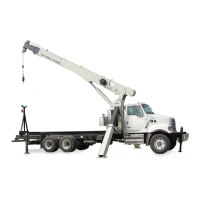
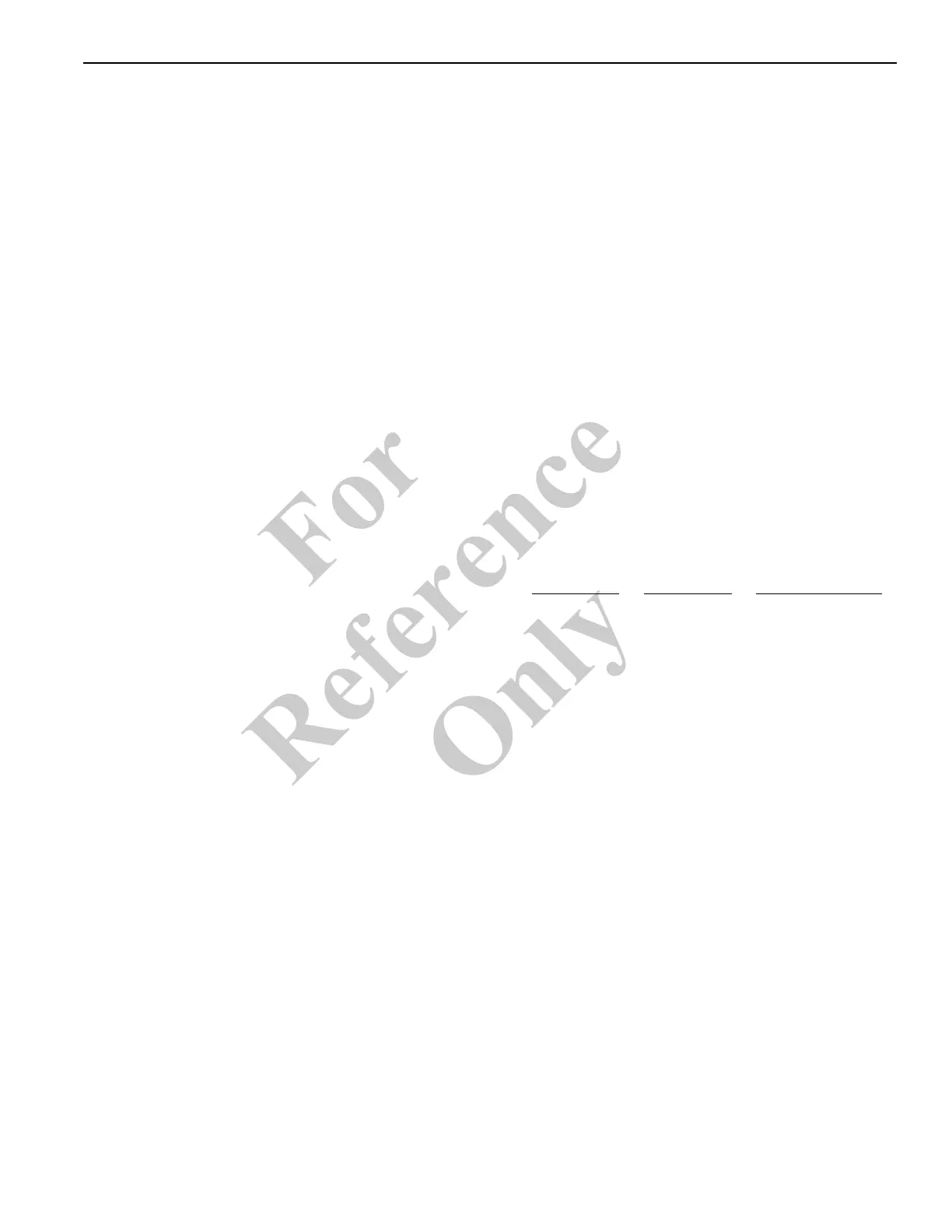